Calculus III
Contents
3 Dimensional space
Partial derivatives
Multiple integrals
Vector Functions
Line integrals
Surface integrals
Vector operators
Applications
© The scientific sentence. 2010
|
|
Calculus III:
Double Integrals over general regions
1. The two regions
Consider a function z = f(x,y) of two variables x and y. We want
to integrate this function over x and over z, not over a rectangle, but
over a general region D :
∫∫D f(x,y) dA
We have two possibilities:
1.1. Horizontal region
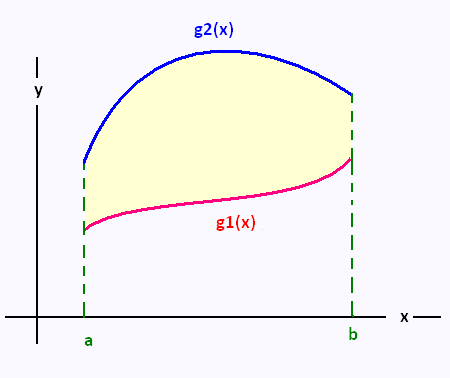
The integral is defined as:
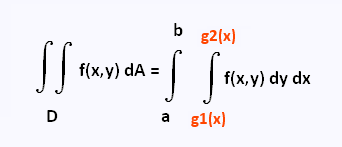
Where
D = {(x,y)| a ≤ x ≤ b, g1(x) ≤ y ≤ g2(x)}
1.2. Vertical region
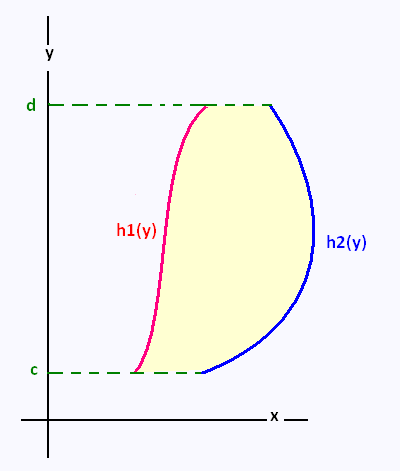
The integral is defined as:
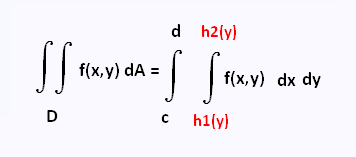
Where
D = {(x,y)| h1(y) ≤ x ≤ h2(y), c ≤ y ≤ d}
The essential task in these kind of problems is to determine
the region over we integrate.
2. Exemples
Exemple 1
∫∫D 2xy - y2 dA
Where
D is the region bounded by y = √x and y = x2
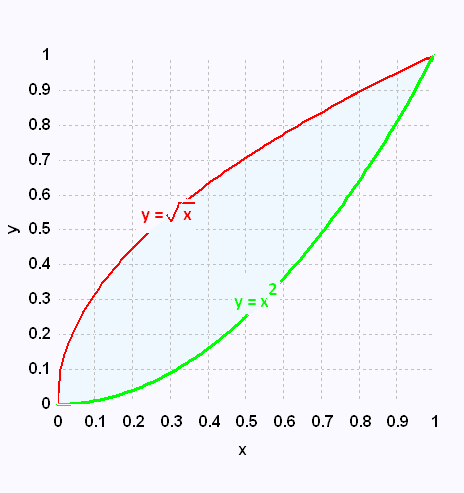
∫∫D f(x,y) dA = ∫ 01
∫x2√x
2xy - y2 dy
dx
= ∫ 01
xy2 - y3/3 | x2√x
dx
= ∫ 01
x2 - x3/2/3 - x5 + x6/3
dx
=
x3/3 - (2/15) x5/2 - x6/6 + x7/21 |01 =
- 1/6 + 1/21 + 1/3 - 2/15 = 17/210
∫∫D 2xy - y2 dA = 17/210
Remark:
If we have used the vertical region form, we will find the same result:
∫∫D f(x,y) dA = ∫01
∫y2√y
f(x,y) dx
dy
Exemple 2
∫∫D f(x,y) dA
Where
D is the triangle with vertices
(1,4), (2,1), and (6,3)
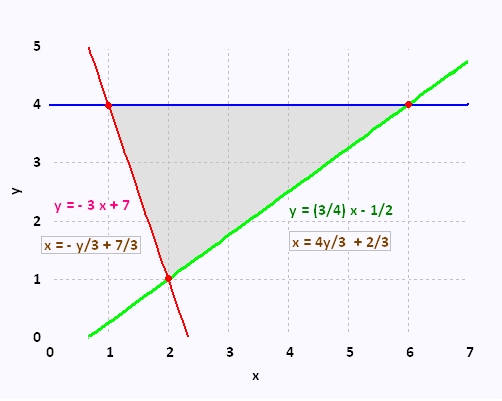
• First method: We use the vertical region form:
∫∫D f(x,y) dA = ∫14
∫- y/3 + 7/3 4y/3 + 2/3
f(x,y) dx
dy
• Second method:
We can also break the region up into two different pieces and
write the region D as the union of two other regions D1 and D2.
D = D1 ∪ D2 where
D1 = {(x,y) | 0 ≤ x ≤ 1, -2x+3 ≤ y ≤ 3}
D2 = {(x,y) | 1 ≤ x ≤ 5, x/2 + 1/2 ≤ y ≤ 3}
So
∫∫D f(x,y) dA = ∫01
∫-2x+33f(x,y) dy dx +
∫15
∫x/2 + 1/23f(x,y) dy dx
Exemple 3
∫∫D f(x,y) dA
Where
D is the region delimited by the line y = 4 and the parabola
of equation y = x2/4.
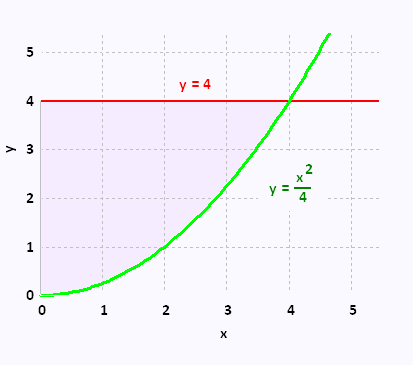
• First method: We use the vertical region form:
∫∫D f(x,y) dA = ∫04
∫0 √2y
f(x,y) dx
dy
• Second method: We use the horizontal region form:
∫∫D f(x,y) dA = ∫04
∫x2/44
f(x,y) dy
dx
|
|